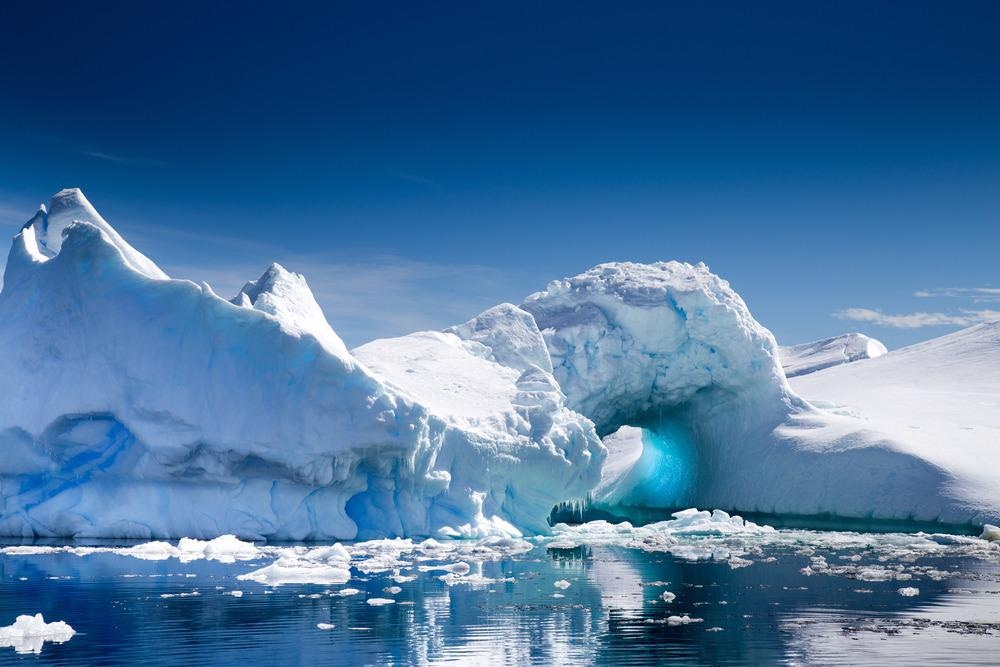Feb 24 2021
A new study reports that glaciers in West Antarctica are moving into the ocean from land faster than ever, leading to increasing global sea levels.

Image Credit: robert mcgillivray/Shutterstock.com
Researchers used a 25-year record of satellite observations to demonstrate, for the first time, wide-ranging increases in ice speed throughout the Getz sector, where some portion of ice accelerated into the ocean by almost 50%.
Led by the University of Leeds, the study describes that in the Getz region, 14 glaciers are thinning and flowing faster than ever into the ocean. From 1994 to 2018, 315 gigatonnes of ice had been lost, increasing the global mean sea level by 0.9 mm, which is equivalent to 126 million Olympic swimming pools of water.
The study findings have been published in the Nature Communications journal and reveal that, on average, the momentum of all 14 glaciers has increased by nearly one-quarter, with three glaciers accelerating by over 44%.
This study will enable researchers to identify whether glaciers in the region might break down in the next few decades and how this could influence future global sea-level rise.
The Getz region of Antarctica is so remote that humans have never set foot on most of this part of the continent. Satellite radar altimetry records have shown substantial thinning of the ice sheet. However, the high rates of increased glacier speed – coupled with ice thinning – now confirms the Getz basin is in ‘dynamic imbalance’, meaning that it is losing more ice than it gains through snowfall.
Heather Selley, Study Lead Author and Glaciologist, Centre for Polar Observation and Modelling, University of Leeds
“Using a combination of observations and modelling, we show highly localised patterns of acceleration. For instance, we observe the greatest change in the central region of Getz, with one glacier flowing 391 m/year faster in 2018 than in 1994. This is a substantial change as it is now flowing at a rate of 669 m/year, a 59% increase in just two and a half decades,” added Selley.
The study, which was financially supported by the Natural Environment Research Council (NERC) and the European Space Agency (ESA), describes how the extensively reported thinning and acceleration noticed in the neighboring Amundsen Sea glaciers now extends more than 1000 km along the West Antarctic coastline into Getz.
The pattern of glacier acceleration shows the highly localised response to ocean dynamics. “High-resolution satellite observations from satellites such as ESA’s Copernicus Sentinel-1, which collects a new image every six-days, means we can measure localized speed changes with ever greater detail.
Dr Anna Hogg, Study Co-Author and Climate Researcher, School of Earth and Environment, University of Leeds
“Consistent and extensive sampling of both ice speed and ocean temperature are needed to further our understanding of the dynamic ice loss, which now accounts for 98.8% of the Antarctica’s sea level contribution,” added Dr Hogg.
An investigation of ocean measurements spanning 25 years helped the researchers to demonstrate complex and yearly changes in ocean temperatures. These findings indicate that the “dynamic imbalance” is mainly due to longer-term ocean forcing, where a higher heat content in the ocean interacts with the ice and accelerates melting.
We know that warmer ocean waters are eroding many of West Antarctica’s glaciers, and these new observations demonstrate the impact this is having on the Getz region. This new data will provide a new perspective of the processes taking place so we can predict future change with more certainty.
Pierre Dutrieux, Study Co-Author and Climate Researcher, British Antarctic Survey
The researchers led by the University of Leeds included collaborators from Swansea University, Colombia University, British Antarctic Survey, ENVEO IT GmbH, Remote Sensing Technology Institute in Germany, University of Denmark, University College London, and Korea Polar Research Institute.
The study researchers were supported by different grants. Anna E. Hogg was supported by the NERC DeCAdeS project (NE/T012757/1) and ESA Polar+ Ice Shelves project (ESA-IPL-POE-EF-cb-LE-2019-834). Pierre Dutrieux was supported by NSF awards 1643285, 1644159, and a Columbia University Climate and Life Fellowship. Tae-Wan Kim from the Korea Polar Research Institute was supported by grant KOPRI PE20160.
Journal Reference:
Selley, H. L., et al. (2021) Widespread increase in dynamic imbalance in the Getz region of Antarctica from 1994 to 2018. Nature Communications. doi.org/10.1038/s41467-021-21321-1.